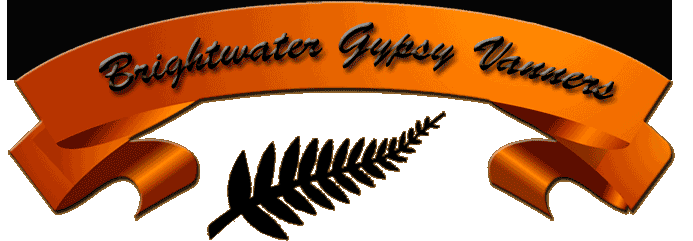
What is DNA?

First you must understand that there is no mystery to DNA and it is simple to understand if you take a few minutes to read the basics. DNA or deoxyribonucleic acid is a molecule found in all living cells and is the hereditary material in humans and almost all other organisms. It is often described as the blueprint of the species and contains information used in everyday metabolism, growth and influences most of our characteristics and horses alike. Each individual organism has it own unique DNA code, no two are alike.
In the equine world, a DNA profile provides a unique, individual identification of the horse and can be used for disease identification, but mostly for sire and dam verification and can resolve any pedigree issues. Tests are 99.99 % accurate or greater and parentage verification is accomplished through selected DNA regions called microsatellites markers or loci, not only from blood samples of living horses but also from hair roots, teeth or other materials that might be available from dead horses. These microsatellite markers are recorded on a DNA test as a combination of letters and numbers, ie...VHL20 or ABS2, you may have seen them if you have a copy of a DNA report in your hands. While many labs may test up to 17 different markers the International Society for Animal Genetics ISAG, the scientific organisation most closely associated with animal parentage testing programs, endorses a panel of 9 internationally recognised equine markers to date that are considered necessary for exact parentage verification. In the highly unlikely event that a unique solution is not found using the routine DNA test for a parentage analysis, additional tests using the same methods are available that can extend the microsatellite panel until a single set of qualifying parents is identified.
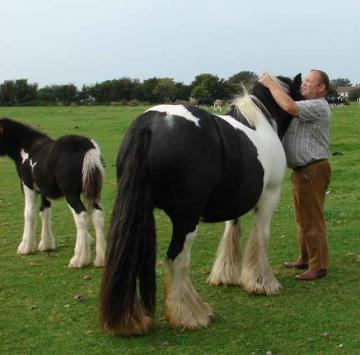
DNA reports are accurate "ONLY" within the first generation (sire/dam) due to the complexity of the genes once you move to the next generation (grandsire/grandam). In short what this means is......to ascertain a foal's grandsire or grandam one must first do a match from the foal to the sire/dam and then from the foal's sire/dam to the foal's grandsire/grandam. It is not possible to say that a foal is the offspring of a supposed grandsire or grandam by comparing the foals DNA directly to the grand parents. If one studies the DNA report samples below this becomes very apparent. If a seller quotes you the grandsire or grandam of a horse that you are looking to purchase, but cannot give you the names of the sire and dam then beware. Logic dictates if they do not know the sire and dam, then how can they possibly know who the grand parents were.
Above picture: Tom Price pulling hairs off of Second to None, a confirmed match to Mr. Beau Jangles.
Should DNA Testing be Mandatory?
Some may say that they do not care what the lineage of their gypsy vanner is and that is fine if you have purchased a mature horse for pleasure from a reputable breeder and are happy with your purchase. However, It is easy enough to fool unsuspecting newcomers to this breed with young crossbred stock. This is already happening down under and there is nothing wrong with cross breeding as long as the seller makes it known to the buyer at the time of their purchase. It is particularly easy to sell young, crossbred stock as purebreds and tell the buyer that the foal will mature later, such as the feather will fill out when they reach two. Sellers can also command higher prices for foals or horses if they claim to come from particular bloodlines and such scenarios as falsification of breed parentage is happening more than one realises. This is where DNA testing is critical and puts an end to such deception giving the buyer confidence when purchasing.
Central DNA Data Base
Many of the major horse breed registries have been well established for decades with DNA verification, as they have recognised that assurance of pedigree accuracy is needed to "preserve" a breed and move forward. The existing DNA system is working fine for them, but not for the gypsy vanner, as almost from the start falsification of DNA parentage was widespread. The Gypsy Horse Registry of America publicly lists all their registered gypsy vanners in their website's stud book. Of the 843 currently listed over 31% list parentage as unknown European stock and of the other 69% less than half are parent qualified, meaning that they have not been DNA confirmed. Many of those that have been parent qualified have been done so in the last five years from reputable US breeders dedicated to establishing DNA histories. If many of the parents listed were tested against DNA it would not be surprising to find that many of them do not match, making the real figure rather bleak. We have now been left with a monumental problem of where did these horses come from and under the current DNA system of matching sires and dams to their progeny it would be a labour intensive effort without any guarantees of matches.
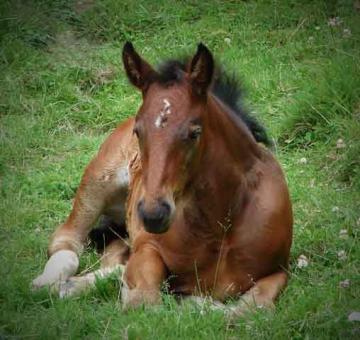
Logically I assumed that DNA profiles were entered into a computer that would search ALL the available DNA profiles on record looking for a match. In today's computerised age I think that was not a silly assumption. However, that is NOT what actually happens. All DNA recorded with Kentucky University or whomever is still the private possession of either the owner or the registry who submitted the samples. WITHOUT their permission you may not compare your horses DNA profile with a supposed sire or dam. When Kentucky University is asked to do a parent qualification match the request comes with the supposed sire or dam and permission of their respective owners or registry. They will then pull out those particular DNA profiles and compare with the progeny's DNA. If negative what are you going to do...ask Kentucky University to continue doing this procedure with the 1000's of horses they have on file? Unlikely and you can now see where the real problem lies. This is not to blame the universities as the system has worked well with registries that have been established for decades, but the existing system was not designed for the onslaught of the gypsy vanner popularity and the ensuing dishonesty that came with it. It has highlighted the flaws in the system and a new system needs to be adapted to circumnavigate this obstacle.
This is where a "worldwide central" DNA data base is necessary to assure pedigree accuracy and honesty thereby preserving the inherent qualities of the gypsy vanner while moving forward. A computer program needs to be instigated, one that searches all known DNA profiles in the system looking for a match. It sounds simple and I hope others like myself has come to the same conclusion. From here all DNA is submitted and any one looking for a match or wanting confirmation of a match just needs to submit the DNA profile of their gypsy vanner or the one they are about to purchase. Anyone opposed to this system or not willing to present their DNA for scrutiny, may have other ulterior motives involved, as I can not see any justifications in withholding DNA. It would also protect against duplications of DNA, ie submitting hairs pulled from a purebred to gain parent qualification to purebred sires and dams in the case of selling crossbreds. The system would pick up the duplicity if on file. In the end a centralised worldwide DNA data base should be shared freely and would only further the betterment of the breed.
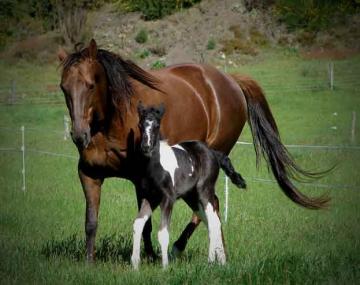
Like many other breeds, in the beginning the gypsies crossbred their horses, but that was many decades ago and they have been breeding pure for so many generations now that to crossbreed again will only result in a dilution of the gene pool and in effect back breeding. Without a central DNA data base the crossbreeding of the gypsy vanner may become prolific and the gene pool diversified and diluted, much to the detriment of the gypsy vanner breed.
We all know this to be a problem and I am tackling it head on by speaking out loud. If I have upset someone that is not my intentions, but rather to bring an end to the deception that has been prevalent for so many years now. Some will say that I am attacking and discrediting the gypsies. Hardly not, I have seen good and bad in every race or population and some of the worst atrocities have been perpetrated by non gypsy persons. To reiterate, a world wide central DNA Data Base is a must if the gypsy vanner breed is to go forward. Already the majority of DNA profiles are held at Kentucky University, with the remainder scattered in various labs around the world. Obviously some will be against this concept as there may be much embarrassment in the beginning, however if we can put our differences aside to allow those people an amnesty or truce, we will all benefit in time as well as the betterment of the breed.
How to Extract DNA
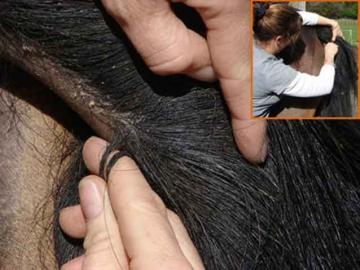
DNA can be extracted from hair, blood or any tissue, however the most common is mane or tail and it must contain intact root bulbs or follicles, which are the source of DNA. In young foals, the mane is typically too fine so DNA samples should be pulled from the tail. These samples are easily obtained with no special shipping or handling procedures before sending to the laboratory.
From the tail, remove about 5-10 strands at a time from the inside and high up, as many of the tail hairs here are shorter and come out easily. If you wrap your finger around a small bunch down to the base of the tail and pull quickly (DO NOT CUT), you horse should not feel a thing. However, if you are unsure of the reaction your horse may have ie, kicking, then take the sample from the mane. Cut the strands to about 10 centimetres long and tape to a piece of paper being careful not to tape the roots bulbs. You need approximately 30-50 strands of hair with good root bulbs.
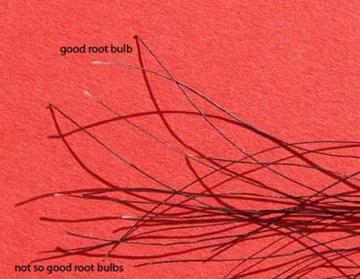
MAKE SURE YOU ACTUALLY GET THE ROOTS BULBS otherwise the samples will have to be re submitted – see pictures below for examples
Good root bulb or follicles have a white, bulbous tip on the end, if it does not have a white tip then you have only pulled the hair and missed the DNA.
DNA Profiling Labs
Many universities do DNA horse testing but the one we use most frequently is either Kentucky University or Animal Genetics as they are less than half the cost of our New Zealand and Australian counterparts. Any lab is acceptable and most are happy to accept DNA reports from other labs as long as the report has at least nine of the recognised international markers recorded. Here is a list of where you can have your DNA tested. There are others in the country but their charges are exorbitant and they seem to be slower where as Kentucky University and Animal Genetics are very fast and efficient.
Animal Genetics
Kentucky University
How to Read a DNA Report
Reading DNA samples is simple and it takes less than 5 minutes to ascertain if a dam or sire matches a particular horse. Shown below are the nine internationally recognised microsatellite markers or loci in the first columns and the alleles (gene) are the in the second column. One allele is taken from both parents to make up the foals own special DNA code. In this example this would be considered a match as you can see that the foal has taken one allele from each parent. For instance, at the marker VHL20 the foal took the "I" from the sire and the "P" from the dam, on the second marker HTG4 the foal took the "P" from the sire and the "L" from the dam and so on, until we conclude or exclude a match.

HOWEVER....................
For absolute parent verification "both" the sire's and the dam's DNA must be present as the real possibility exists that an unusual anomaly can appear when testing against only the sire's DNA or only the dam's DNA. For instance in the example below if we were to check the offspring against only the sire then at the marker VHL20 it would be considered a match as we assume that the offspring has taken his A from his sire. The same would be true if testing against only the dam's DNA as once again we assume that the A came from the dam. However once both the parents DNA is subjected to scrutiny we then have to exclude the offspring from this parental combination as where did the B come from.
For purposes of clarification if both parents match the DNA of a foal it is called “COMFIRMED”. If only one parent is matched to a foal it is called “QUALIFIED” in another words the one parent is qualified to be a possible match to the foal but can not be absolutely confirmed without the other half.
ISAG currently dictates that if the “9” internationally identified markers match it is considered a positive result, but now they are testing for up to 17 markers. I have DNA profiles on horses that have all 9 of the internationally identified markers matching against one parent, but when checked against the additional 8 new markers it becomes apparent that it is not a match. Given that there are literally 1000’s of markers what will happen when we begin to test more against only one parent. I have heard on the grapevine that there are plans under way to begin testing up to 200 markers!
